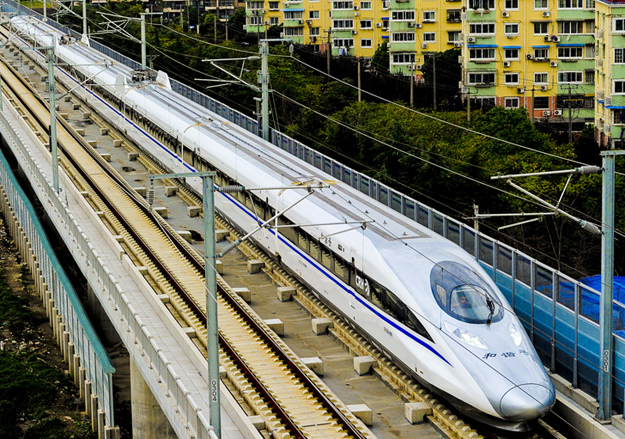China has the world's first gigapolis

The region in eastern China, known as the Yangtze Delta , or the Yangtze Golden Triangle, is located at the place where the river flows into the East China Sea. The historical center of entrepreneurship, now it is - one of the most densely populated areas of the planet. The Chinese government is constantly and steadily campaigning to improve transportation in the region. In fact, now this place can be called gigapolis - the first city on the planet with a population of more than 100 million people.

Gigapolis from the satellite.
Now on this site with the size of 300 per 200 km are located the million-plus cities of Shanghai (24 million people, population density - 3,800 people / km 2 ), Nanjing (8 million), Hangzhou (8 million) and two dozen smaller cities with a total population of about 3 million people. The total population of this region exceeds 100 million people. Its contribution to GDP is $ 1 trillion, or more than 20% of China’s GDP.
')




Local Views with Google Street View
Shanghai is a historically established center of entrepreneurship. Many researchers attribute the origin of this trait to the fact that for the last 6000 years (until the 20th century), there were excellent conditions in this territory for growing rice, the main crop of China. The technological complexity of this process and the need for qualified control over it led to the emergence of a high culture of entrepreneurship. And the economic reforms of China over the past 40 years have allowed the region to become the engine of the Chinese economy and one of the world centers of production.
For the past 10 years, the government has been actively developing the Delta transport system . There are new highways, metro lines. A magnetic-cushion train was launched, reaching a speed of 450 km / h. The $ 100 billion high-speed railway network connected three metropolises — Shanghai, Nanjing and Hangzhou. New trains run at speeds of up to 300 km / h, as a result of which one can get from one city to another in 1-2 hours - about as much as the average resident spends on the road to the city center somewhere in New York or Moscow.
The mentality of the inhabitants of the region is already changing, the boundary between the suburb and the center is being erased. The accessibility of all areas increases the mobility of residents, increases access to both educational institutions and jobs. At some not very distant moment, quantitative growth can turn into qualitative. The golden triangle already includes the world financial center, the world's largest trading port, and the center of entrepreneurship and start-ups (Alibaba has appeared in Hangzhou). Nanjing is the ancient capital of the country and the center of culture, and Suzhou is a popular place for tourism. All of this together in the end can lead to the emergence of one of the most important centers of the planet.
Unfortunately, this phenomenon has serious flaws. Chinese cities are choking on smog, with which the government can do nothing so far. Restrictions are imposed on the entry of cars in major cities depending on the license plate of a car (certain numbers may enter on certain days), but these measures do not have much efficiency. For example, the World Wildlife Fund claims that the Yangtze Delta is the largest source of pollution in the Pacific. How the emerging gigapolis can cope with this, whether the gradual distribution of electric vehicles or some other measures will help it - only time will tell.
Source: https://habr.com/ru/post/376553/
All Articles